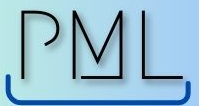Introduction 
In an era where agility and adaptability are buzzwords in project management, the Waterfall methodology stands out as a beacon of structure and predictability. Rooted in a linear and sequential approach, the Waterfall model remains one of the most employed and traditional methods in software development and project management. This article will traverse the depths of the Waterfall methodology, exploring its origins, its step-by-step process, and its merits and limitations.
Origins of the Model
The Waterfall model traces its origins to the manufacturing and construction industries, where projects are highly structured, and changes after the fact are prohibitively costly or impossible. Dr. Winston W. Royce is often credited for popularizing this approach in software development in the 1970s, even though he never explicitly used the term “waterfall.”
Understanding the Waterfall Approach
The name “Waterfall” metaphorically represents the cascading nature of the process. Like a waterfall flowing steadily from one phase to the next, this methodology emphasizes a systematic, sequential approach to project management. Each phase must be completed before the subsequent phase begins, with little room for overlap or cycling back.
Stages of the Waterfall Methodology
Requirements: The first step is dedicated to collecting all necessary project details. This phase ensures that the project team comprehensively understands client expectations and project deliverables.
Design: Based on the requirements, the project undergoes architectural and technical design. Here, every aspect of the project solution is mapped out, including hardware and system configurations.
Implementation: The actual work begins. Whether it’s coding in software development or building in construction, this phase involves creating the project deliverables.
Verification: Before delivering the final product, rigorous testing and quality assurance processes are undertaken to ensure the project aligns with requirements and is free of defects.
Maintenance: After deployment, projects may require ongoing support, upgrades, or troubleshooting. The maintenance phase addresses these needs.
Advantages of the Waterfall Model
Clarity and Simplicity: With clearly defined phases, team members, stakeholders, and clients can easily understand the project’s progression. Each step has specific deliverables and a review process, providing a clear path from start to finish.
Structured Approach: Waterfall’s rigidity ensures that there’s a disciplined approach. The strict phase dependencies mean that meticulous attention is given to details early on, reducing the potential for errors.
Predictability: Since the scope and requirements are defined upfront, it’s easier to estimate timelines and costs. Stakeholders appreciate this model for its financial and temporal predictability.
Documentation Emphasis: Each phase concludes with detailed documentation, ensuring that any project intricacies aren’t lost and can be referenced in the future.
Limitations of the Waterfall Model
Inflexibility: The most common critique is its linear approach. Once a phase is completed, revisiting it becomes cumbersome, making it ill-suited for projects where requirements may evolve.
Dependent Stages: A delay in one phase invariably delays the entire project. Furthermore, the testing phase’s placement towards the end can mean defects are discovered late in the cycle, becoming costly to rectify.
Client Involvement: Clients are most involved at the beginning (requirements) and end (deployment). The extended period of non-involvement can sometimes lead to misaligned end products.
Risk and Uncertainty: Since testing is conducted late in the process, there’s a heightened risk of project failures or issues emerging late in the project.
Is Waterfall Still Relevant?
In an age dominated by agile methodologies and rapid iteration, one might question the relevance of Waterfall. While it’s true that certain industries, especially those requiring rapid adaptability, might find other methodologies more suited, the Waterfall model still holds its ground in environments where a structured approach is paramount.
Projects with clear, unchanging requirements, or those where the product must be rolled out in a single major launch, often benefit from Waterfall’s structured approach. Industries like construction, manufacturing, and certain areas of software development, especially those governed by strict regulations, often lean on the predictability and structure that Waterfall offers.
Conclusion
The Waterfall methodology, with its linear, phase-based approach, stands as a testament to time-tested methods in project management. While it offers predictability, clarity, and a structured framework, it also poses challenges in flexibility and late-stage risk realization. Understanding the nature of the project, stakeholder requirements, and the environment in which the project operates can guide the choice of whether Waterfall remains the best fit or if another methodology should cascade into place.

